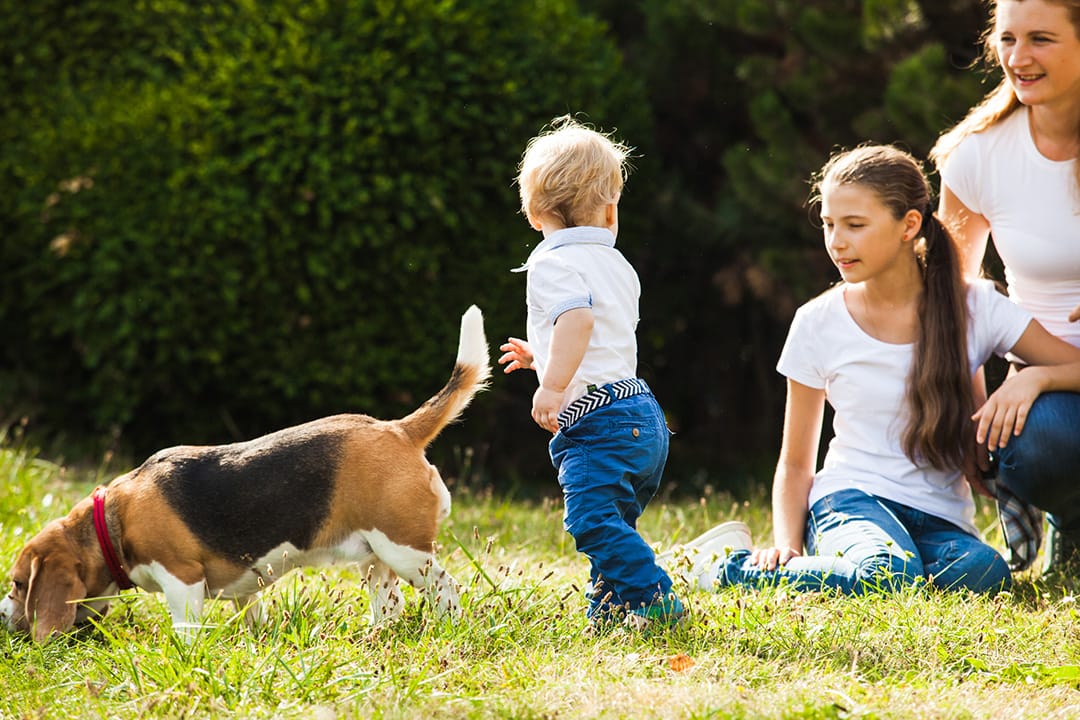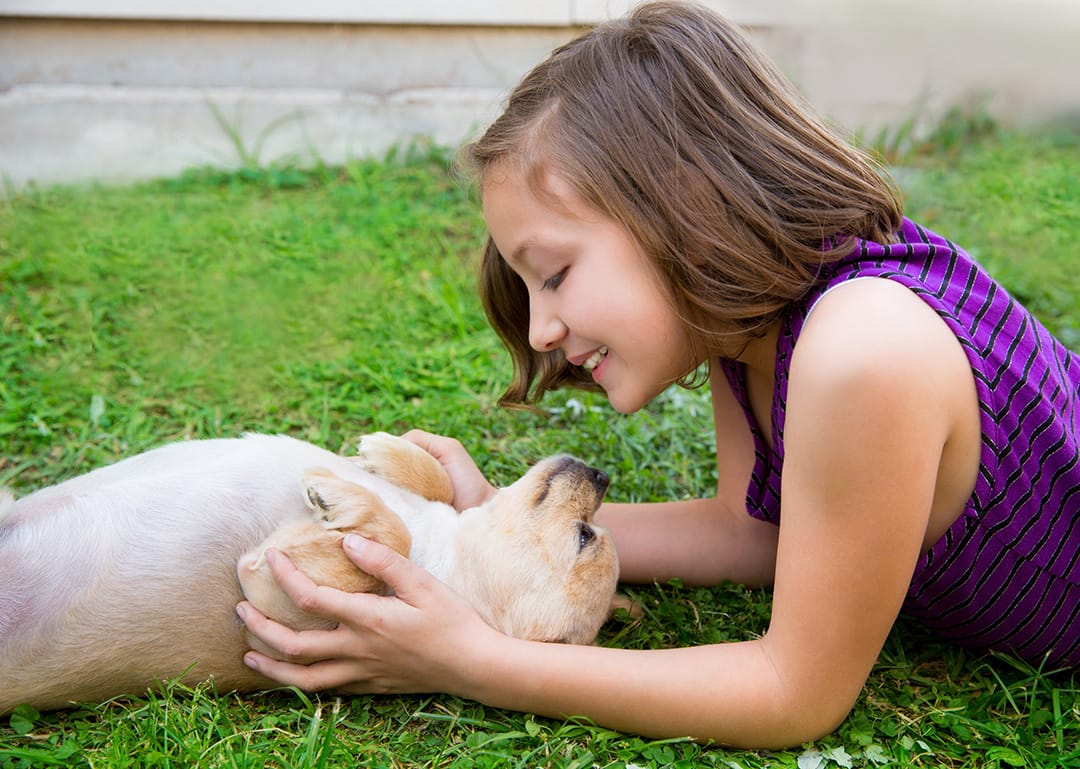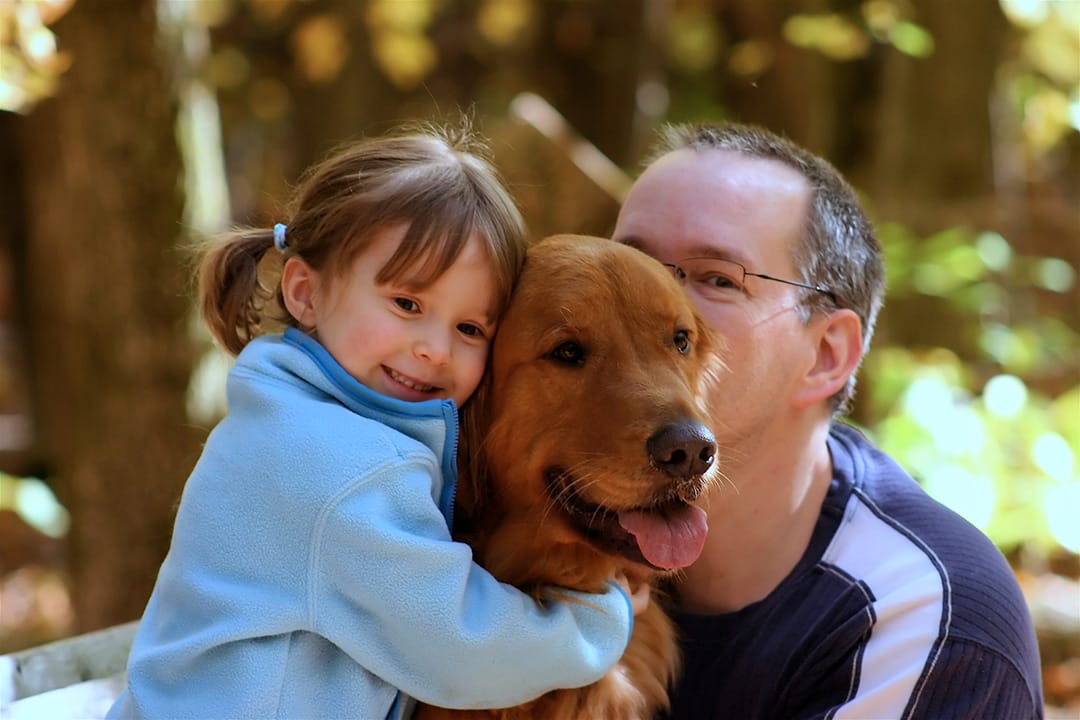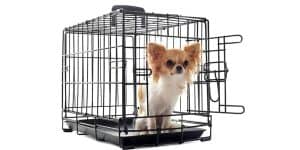10 Tips to Make Your Rescue Dog Feel at Home ASAP
Published: Last updated: by Jessi Larson Affiliate Disclosure: We hope you love the products we've recommended! As an Amazon Associate we earn a small share from qualifying purchases.Adopting a dog is one of the coolest things you can do. These pups are in desperate need of a loving, structured home where they feel safe and secure. You’re ready to step up and give them that!
The big question, however, is how do you help them feel that this is their home as soon as possible? Here are 10 tips to make the transition as successful as possible.

1. Be patient, grasshopper
We all have a rosy picture in our head of what life with our new dog will look like. But, as they say, Rome wasn’t built in a day. The same goes for introducing a new dog into your home. It’s going to take time and patience before your dog is fully acclimated.
At this point, you’re total strangers to each other. You don’t know your dog’s full personality and temperament yet, and your dog sure as heck doesn’t know what to expect from you. At this time you’re sizing each other up, trying to figure out what the other is all about. So have patience as you learn each other and get into a groove.
2. Plan ahead
The day you bring your dog home is going to be crazy! So much to think about and so much going on. To help the transition, it’s extremely important to plan ahead.
What does that mean?
Well, for starters, block off your calendar for at least 3-4 days and consider taking some time off of work. You need time to bond with your dog and show them that you’re here to stay.
Then start dog-proofing your house. This is especially needed for young dogs but also good for older dogs as they learn boundaries. For example, consider pet gates to keep your pup away from hazardous areas of the home. Cesar Millan has good advice on this topic.
Lastly, don’t forget to have standard supplies. Which brings us to the next point…
3. Get the basics first
The dog aisle of the store has some sort of siren call for new dog parents. Adorable plush toys! Cute, fluffy blankets! Cool puzzles! Crazy chew toys! Before you know it, your cart is full and your wallet is empty.
Resist the urge! In the beginning, your dog just needs the basics. Once you get to know their personality, temperament and likes and dislikes, then you can move on to the fun stuff. For example, maybe your dog completely demolishes stuffed toys and then tries to eat the stuffing. It’s good to know this before you go out and buy 10 of these toys.
For the basics, we recommend:
- Food
- Food and water bowls
- A crate
- Comfy bedding
- A collar and leash
- An ID tag
- Doggy shampoo
- A variety of treats
- A variety of toys
- A variety of treats
4. No fast movements
OK, so you set your expectations, blocked off your schedule and bought supplies. Now it’s time to take home your new dog! As you can imagine, the pup is going to be anxious and stressed out. It’s a lot to take in!
So, to ease their fears, we recommend keeping the number of people in the house to a minimum. Only the main family members. No friends or other relatives just yet. (But soon!)
And then, it’s very important to keep the environment calm and relaxed. Your pup is on edge, so it doesn’t help when people are darting around or the kids are yelling. Try to be on your best, most relaxed behavior.

5. Make proper introductions
Another note: Make sure your dog meets everyone in the house! This includes kids and other pets. After all, your pup is walking into an established home where everyone knows each other. This can be intimating. But proper introductions help ease the scariness.
How is this done? Slowly. Gently introduce the dog to each person or pet, and keep the interactions to only a few minutes at the start.
6. Give them a break
Phew, your pup is probably a little pooped out after all this! To help your dog recharge their batteries, give them a safe space of their own right away. This can be a kennel, a small room, a blocked off area, whatever works for you.
This helps them feel safe and secure right off the bat!
7. Provide structure
Like kids, dogs really do want structure, boundaries and rules (even though it sure doesn’t feel that way!) This helps them feel secure and know where they fit in.
This includes: a set schedule for eating and sleeping, consistent training and regular rules.
8. Start training right away
Speaking of training, don’t wait until down the road. Start the very first day, and make sure the entire family is on the same page. It’s so confusing when one person reprimands the dog for doing something but others encourage it. (Like eating human food, for example.)
Consistency is key. And always go with the positive reinforcement route.
9. Watch and listen
It’s likely that your dog comes to you with quite the story, whether that’s roaming free without a home, life in a puppy mill, time with a neglectful owner or just living with a family that wasn’t the right fit.
This, along with regular personal quirks, may lead to behaviors that you should be aware of. For example, perhaps your dog is terrified of loud noises because it reminds them of a scary time in their past.
How do you figure this all out about your dog? By watching and listening. This is the quickest way to get to know your dog and help them adjust.
10. Bring the love
Lastly, you can’t forget the most important part: LOVE. Give that furry new friend lots and lots of love and happiness. After all, this is what it’s all about.




 Getting a New Dog?
Getting a New Dog?
1 Comment
Question…I am fostering to adopt a dog. She was brought from another state.
While i am spoiling her, she is desperately unhappy and looking for her previous family. She wants outside, not to potty, but to stand and smell the air, crying….
She appears desperate to find her home…she even cries in her sleep….any suggestions?